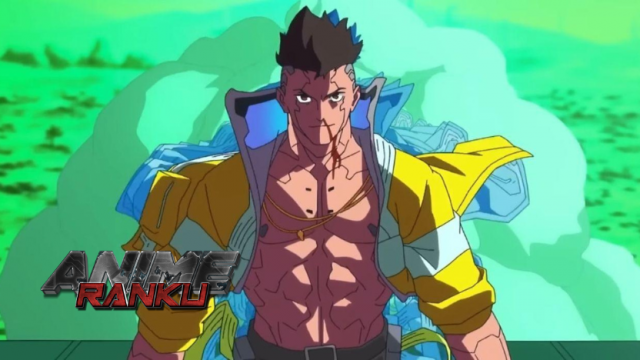Cyberpunk: Edgerunners, a visually captivating video game with striking settings and character designs, drew attention upon its release a few months ago. The animation prowess displayed in David Martinez's narrative portrays a society that is highly technologically advanced yet marked by inequality.
David’s journey unfolds as a compelling coming-of-age story marked by themes of revenge and ambition. However, some narrative choices in Edgerunners raised questions about their effectiveness. The decision to incorporate a time skip between the first and second parts, for instance, aimed at illustrating David's physical transformation but potentially hindered the show's pacing, leading to a somewhat unsatisfying conclusion.
David's physical and psychological changes were visible due to the time skip

Between Episode 6 and Episode 7, David undergoes a remarkable transformation, transitioning from a slender child to a muscular man with a series of implants. Despite the lack of a specified timeframe, the change is evident and renders him almost unrecognizable. His character undergoes a parallel shift, evolving from an uncertain, impulsive adolescent to a respected figure and devoted individual. His relationship with Lucy also reflects her transformation from aloofness to the capacity for connection. Although no longer an edge runner, Lucy appears happier and more fulfilled in her connection with David.
While the implants evidently impact David's psyche negatively, his initial composed and confident demeanor contrasts with the potential toll. Ironically, the time jump emphasizes that, despite certain events, the warped world remains largely unchanged.
Without the time skip, Cyberpunk Edgerunners' ending would have had more impact

Despite increasing the impact of David's physical transformation, the time jump might have diminished the effects of a crucial turning point in the narrative. The audience misses the immediate aftermath, and by the time David returns, he has already moved from one emotional state to another. Without the time jump, the authors could have utilized David's emotions as a driving force for a more impactful conflict.
The antagonist remains the same, but the timing of his actions lacks the immediacy that would have resulted from occurring just after certain events. The time skip, aimed at giving the audience a breather before the conclusion, seems ill-suited when the writers intended to evoke emotion and excitement during the decisive battle. The world and its laws persist, maintaining a status quo.
There were alternative ways to portray David and Lucy's transformation, perhaps through a montage illustrating David's training or by depicting his struggles to become stronger through the increasing use of implants and their consequences on his body and mind.
While the time skip doesn’t necessarily undermine Edgerunners, a more careful handling or avoidance of it could have been considered. The relationship between David and Lucy had been developing since the outset, and David's physical transformation commenced in Episode 1 with his first implant. A more prudent approach would have been to showcase the effects of certain events on both characters, exploring various emotions on one side and a yearning for a particular lifestyle on the other—a potent catalyst for an explosive final arc.






